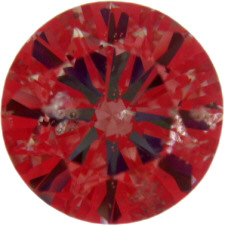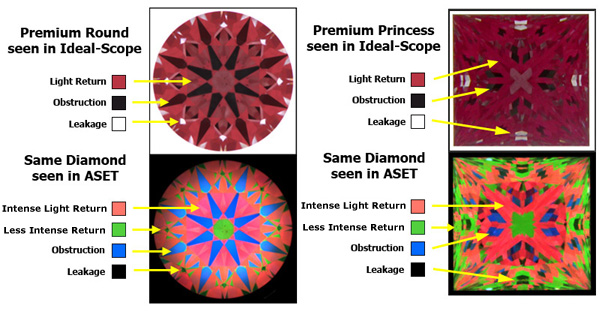Hi,
I understand the idea behind idealscope and ASET .
But I have two questions:
1. Is there a good way to compare one stone''s idealscope to another''s ASET results?
Do I just compare the using the following mapping:
IS: Black ASET: BLUE
IS: Red ASET: Red
IS: PINK ASET: Green
IS: Pale Pink ASET: ?
IS: white ASET: Black
But How do I translate the different shades of red into ASET terms?
2. Also, is more IS:black area(or ASET: BLUE) better or worse? (i.e. is having more direct light reflection better) I.e. even though it''s total internal reflection back to you, but if you look at it directly, you will be blocking the light, so effective more IS:black (or ASET:BLUE) area means the diamond will appear darker?
Thanks.
bschai
I understand the idea behind idealscope and ASET .
But I have two questions:
1. Is there a good way to compare one stone''s idealscope to another''s ASET results?
Do I just compare the using the following mapping:
IS: Black ASET: BLUE
IS: Red ASET: Red
IS: PINK ASET: Green
IS: Pale Pink ASET: ?
IS: white ASET: Black
But How do I translate the different shades of red into ASET terms?
2. Also, is more IS:black area(or ASET: BLUE) better or worse? (i.e. is having more direct light reflection better) I.e. even though it''s total internal reflection back to you, but if you look at it directly, you will be blocking the light, so effective more IS:black (or ASET:BLUE) area means the diamond will appear darker?
Thanks.
bschai










300x240.png)